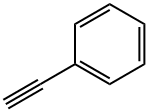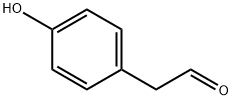Phenylacetaldehyde , 10mMinDMSO , 122-78-1
Synonym(s):
α-Tolyaldehyde;2-Phenylacetaldehyde
CAS NO.:122-78-1
Empirical Formula: C8H8O
Molecular Weight: 120.15
MDL number: MFCD00006993
EINECS: 204-574-5
| Pack Size | Price | Stock | Quantity |
| 1ml | RMB159.20 | In Stock |
|
| others | Enquire |
PRODUCT Properties
| Melting point: | −10 °C(lit.) |
| Boiling point: | 195 °C |
| Density | 1.079 g/mL at 20 °C |
| vapor pressure | 2.09hPa at 20℃ |
| refractive index | n |
| FEMA | 2874 | PHENYLACETALDEHYDE |
| Flash point: | 188 °F |
| storage temp. | 2-8°C |
| solubility | 2.21g/l slightly soluble |
| form | Liquid |
| color | Clear colorless to pale yellow |
| Specific Gravity | 1.075 (20/4℃) |
| Odor | at 10.00 % in dipropylene glycol. green sweet floral hyacinth clover honey cocoa |
| Odor Type | green |
| biological source | synthetic |
| Water Solubility | 2.210 g/L (25 ºC) |
| Sensitive | Air Sensitive |
| Merck | 14,7265 |
| JECFA Number | 1002 |
| BRN | 385791 |
| Dielectric constant | 4.8(20℃) |
| Stability: | Stable. Combustible. Incompatible with strong oxidizing agents, strong bases. |
| LogP | 1.44 at 25℃ |
| CAS DataBase Reference | 122-78-1(CAS DataBase Reference) |
| NIST Chemistry Reference | Benzeneacetaldehyde(122-78-1) |
| EPA Substance Registry System | Phenylacetaldehyde (122-78-1) |
Description and Uses
Phenylacetaldehyde is an organic compound which can be naturally found in buckwheat, flowers, and communication pheromones from various insect orders. It is commonly used for the preparation of fragrance as well as flavors, and applied in flavored cigarettes and beverages because of its honey-like sweet character. It is also applied in the synthesis of polymers, such as polyesters, as a rate controlling additive in polymerization reactions and used in the preparation of more complex chemicals like resmethrin, where it acts as a building block.
Phenylacetaldehyde is used for the preparation of fragrances and polymers like polyesters, which find application as a rate controlling additive in polymerization reactions. It is an active component of fragrances and floral scent due to its honey-like sweet character and finds application in flavored cigarettes and beverages. It is an insect attractant and utilized in blacklight trap for pests. It is also used as a building block in the synthesis of more complex chemicals, such as resmethrin. Furthermore, it is used in association with acetic anhydride and allyltrimethylsilane in three-component coupling process catalyzed by LiBF4 providing homoallylic acetates.
Safety
| Symbol(GHS) |   GHS05,GHS07 |
| Signal word | Danger |
| Hazard statements | H302-H314-H317-H412 |
| Precautionary statements | P261-P273-P280-P301+P312-P303+P361+P353-P305+P351+P338 |
| Hazard Codes | Xn,F |
| Risk Statements | 22-36/37/38-43-11 |
| Safety Statements | 26-36-37-24-16-7 |
| RIDADR | UN 1170 3/PG 2 |
| WGK Germany | 2 |
| RTECS | CY1420000 |
| TSCA | Yes |
| HS Code | 29122990 |
| Toxicity | LD50 orl-rat: 1550 mg/kg FCTXAV 17,377,79 |




